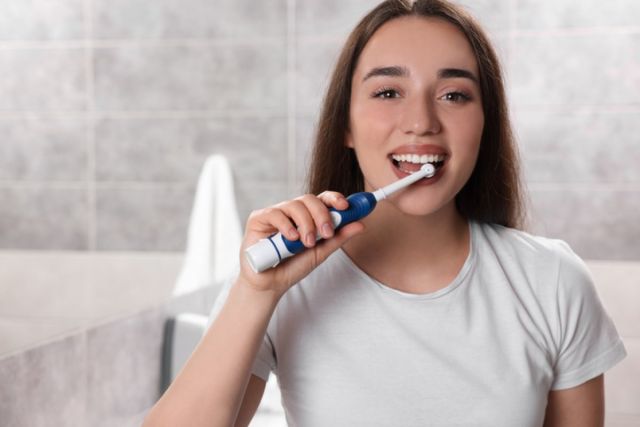Brushing your teeth – what could be easier? But, apparently, there are still some secrets in this process, since the flow of patients with caries and gum disease does not decrease. How to clean your mouth correctly?
Our expert – dentist-orthodontist, doctor of the highest category, member of the professional Society of Orthodontists of Russia, candidate of medical sciences Tatyana Yavorovskaya.
1. Brush your teeth from all sides
The front teeth – the incisors – need to be brushed front and back. But chewable ones also need to be cleaned from above, and very carefully. The chewing surface, covered with tubercles and depressions, is an excellent place for plaque accumulation. For children, these relief patterns (fissures) are often sealed to prevent the development of caries on the distant teeth, because children are not very good at cleaning hard-to-reach places in the mouth. But teeth can be sealed only in the near future after teething. Therefore, adults should not forget about the need to thoroughly clean the surface of their chewing teeth.
2. Don’t forget about the interdental spaces
Teeth have sides and contact points—the places where the teeth touch each other. It is these areas that pose particular difficulty for brushing – the bristles cannot penetrate between the teeth and remove the plaque film, which often causes the development of contact caries (damage to the tooth on the side).
To solve this problem there is dental floss. Threads can be waxed or unwaxed, natural or synthetic, with or without impregnation. The thread is wound around the index fingers and, pressing with the thumbs to maintain tension, it is inserted into the interdental space with sawing movements. The plaque is removed with up and down movements so as not to damage the delicate gingival papilla.
3. Use a waterpik regularly
An irrigator is a device for home hygiene, consisting of a motor, a tube, a tip and a container for water, into which you can also add rinse aid. The motor supplies water to the tube and tip. The water jet not only cleans plaque from the interdental spaces, but also massages the gums, improving blood circulation and, consequently, the nutrition of tissues with useful microelements. The water pressure can be adjusted. An irrigator is an excellent prevention of periodontitis. It is indispensable for people with braces and fixed dentures – crowns, bridges, implants.
4. Use the correct brushing motions when brushing different teeth.
The movements of the brush should be as follows:
- from top to bottom when brushing the upper teeth;
- from bottom to top when brushing the lower teeth;
- sweeping – from the edge of the dentition to its middle when cleaning the chewing surface of the lateral teeth.
Back and forth movements only smear the plaque over the teeth without removing it.
5. Don’t forget about the language
The tongue is covered in taste buds, and its rough surface is an excellent place for plaque to accumulate. Saliva, of course, washes the oral cavity, partially washing away plaque, but it is difficult to remove it from the tongue without the help of a brush.
You need to clean your tongue every day after brushing your teeth. This can be done either with a regular brush or with a scraper. There are also brushes on sale, the head of which has a special surface on the back of the bristles for cleaning the tongue.
Home dental care is the basis for the prevention of caries and gum disease.
But regular professional oral hygiene in a dental clinic will help make it more effective. The hygienist will remove biofilm, soft and hard dental plaque, age spots from coffee, red wine, cigarettes, etc., and will also remove supragingival and subgingival deposits.


